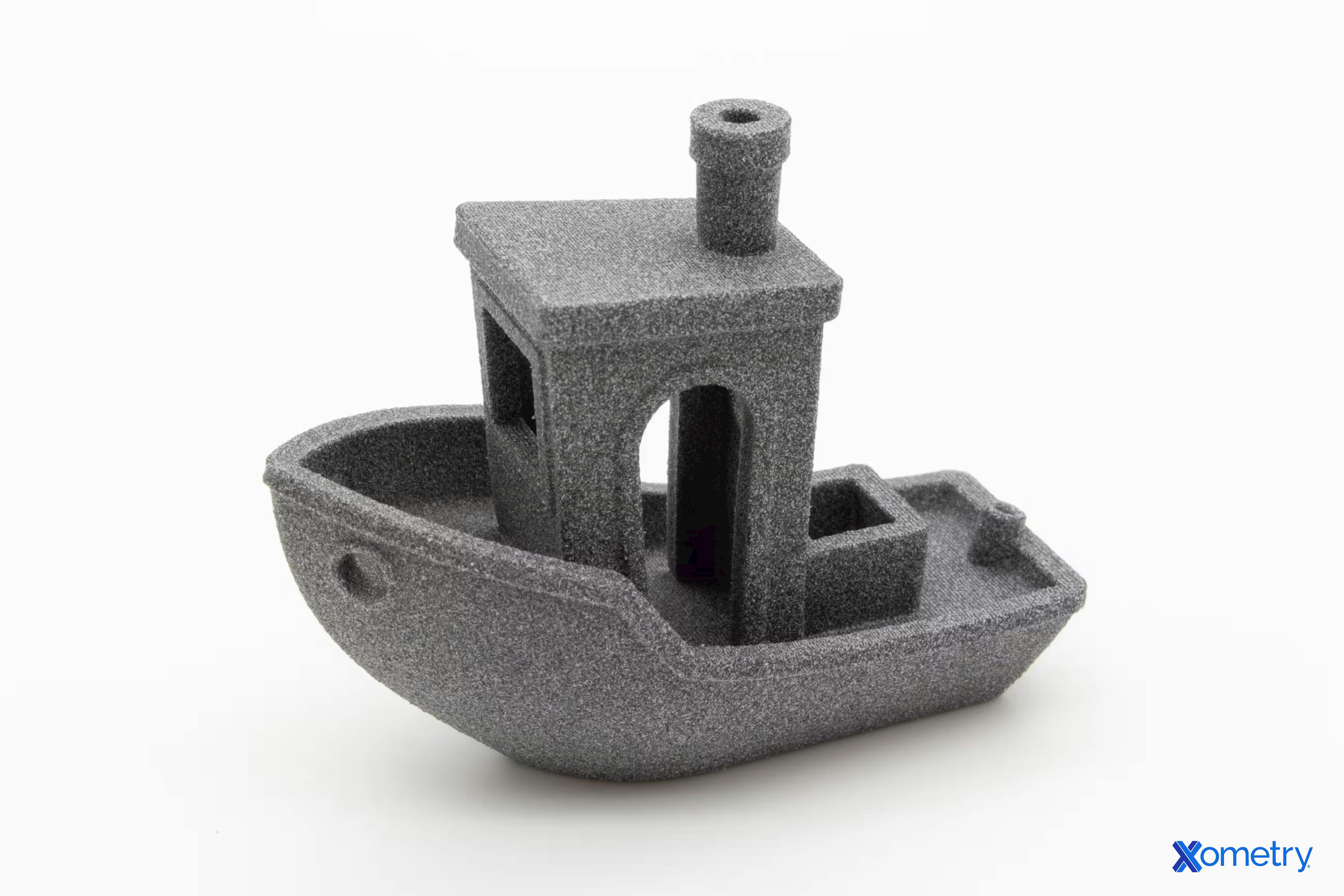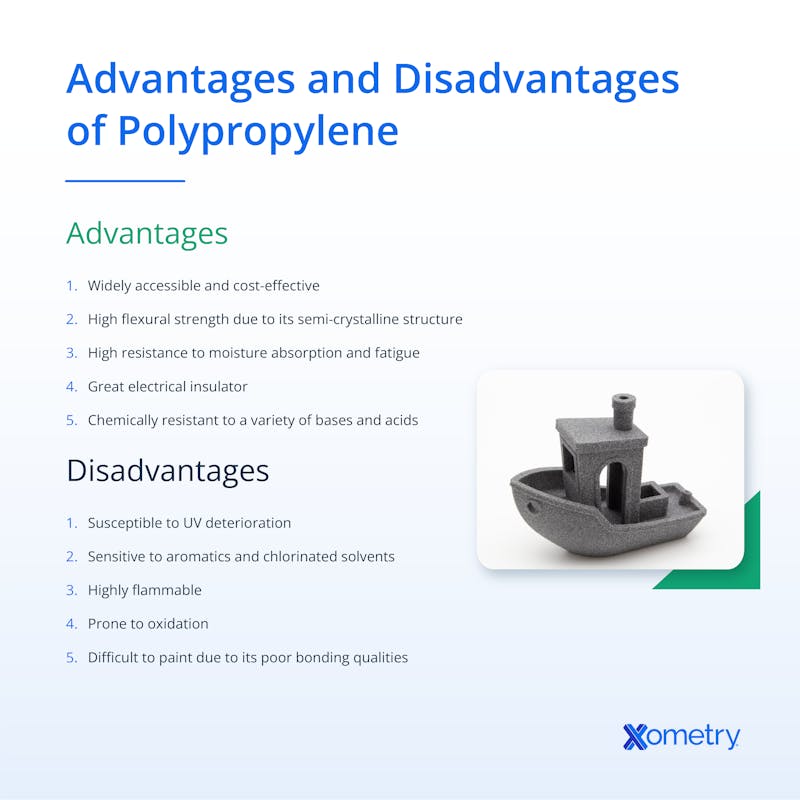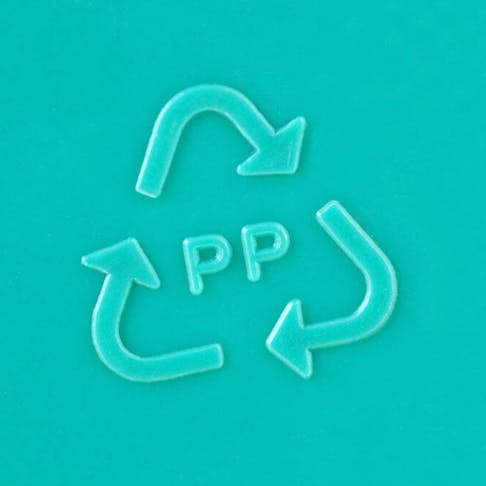Polypropylene is a semi-rigid, cost-effective, and tough thermoplastic linear hydrocarbon polymer resin that offers excellent chemical, electrical, and fatigue resistance at high temperatures. It is considered a hazard-free plastic and as such, it is used for the production of products ranging from plastic furniture and machinery to pill containers and syringes. Despite its versatility, customizability, and strength, this material has some disadvantages as well, such as its proneness to oxidation, high flammability, and sensitivity to chlorinated solvents and aromatics. This article will answer many questions about this awesome material including how it's made, how it's used, and it's advantages and disadvantages.
What is Polypropylene?
Polypropylene (PP) is a low-density, stress-resistant thermoplastic made from a propene (or propylene) monomer. The chemical formula for this linear hydrocarbon resin is (C3H6)n. It was discovered in the mid-1950s by Italian scientists and is today the second most manufactured plastic after polyethylene.
Polypropylene is a thermoplastic material and as such, it can be heated to its melting point, chilled, and then reheated again without any significant deterioration. This property, together with its ability to liquefy instead of burn when subjected to high temperatures, are two critical attributes that make polypropylene a popular choice for manufacturing applications such as injection molding. Some other characteristics of this material are:
- Resistance to chemicals: polypropylene is resistant to diluted bases and acids, making it ideal for containers that hold liquids such as cleaning solutions.
- Toughness: polypropylene has elasticity over a limited deflection range, but it can also be considered a tough material since it experiences plastic distortion early in the deformation process. Toughness refers to a material's capacity to absorb energy and bend without cracking.
- Insulation: polypropylene has a high electrical resistance, making it ideal for electronic components.

Polypropylene is Made
Polypropylene is made by polymerizing propylene gas using a catalyst system, commonly a Ziegler-Natta or metallocene catalyst. The polymerization parameters, including temperature, pressure, and reactant concentrations, are determined according to the desired polymer grade. Several different manufacturing methods may occur in either gas-phase or liquid-phase process:
- Gas-phase process: the reaction happens in a fluidized bed reactor at a temperature of 70°C to 100°C and a pressure of 1-20 atm. Propane and hydrogen are transported over this catalytic bed. Propene is converted to polypropylene as a fine powder, which is then separated from unreacted propene and hydrogen using cyclone separators. In the end, this fine powder is pelletized and is then ready for further usage. In general, gas-phase polymerization efficiency can be improved by using high-activity catalysts to eliminate gaseous and aqueous effluents.
- Spheripol process: this polymerization process employs propene, ethylene, and hydrogen to produce polypropylene. The reaction happens by suspending the catalyst and monomer units in an inert solvent, such as light hydrocarbons. The monomer and catalyst slurry is pumped into one or two vertical stirred gas phase reactors where polymerization occurs. Once the polymerization is completed, the mixture of monomers and polymer powder is discharged from the reactors through dip tubes, while the unreacted monomer is recycled back into the stirred gas reactor. The polymer is then stored for later use.
The Primary Uses of Polypropylene
Polypropylene is used in a range of industries including:
- Material handling
- Packaging
- Medical devices
- Clothing
- Car parts
- Housewares
- Toys
The packaging industry uses polypropylene as a substitute for paper and cellophane, mostly due to its low cost and flexibility. Pallets, bottles, jars, yogurt containers, hot beverage cups, and food packaging are some of the products made with this material. Polypropylene is also frequently used in the automotive industry to produce batteries, bumpers, instrument panels, interior elements, and door trims. Because of its chemical, bacterial, and steam sterilization resistance, polypropylene is employed in a variety of medical applications as well, such as disposable syringes, diagnostic devices, Petri dishes, intravenous bottles, and pill containers.
Even though there are several different ways to process polypropylene and plastics in general, injection molding is the most dominant manufacturing procedure. Polypropylene responds swiftly to injection speed and pressure, and it forms up quickly in the mold, allowing molders to achieve high production rates. Due to its mix of performance attributes, this polymer has a critical position in the injection molding market.
Advantages and Disadvantages of Using Polypropylene
Polypropylene's advantages are its strength and low cost. Other advantages include:

The Difference Between Polypropylene and Polystyrene
The difference between polypropylene and polystyrene is that polypropylene is sturdier. On a molecular level, polystyrene's monomer is styrene, while polypropylene's monomer is propylene. Furthermore, polystyrene's pendant group is a phenyl group, whereas polypropylene's pendant group is a methyl group. The tacticity of the polymer is determined by these attached groups. Let us now take a look at a brief outline of these two materials' key characteristics which separate them from one another:
- Production process: polypropylene is made by chain-growth polymerization, while polystyrene is manufactured by free radical vinyl polymerization.
- Uses: single-use drinking cups, household appliances, and computer housing parts are made of polystyrene, whereas polypropylene is utilized to make containers, packaging, and automobile parts.
- Chemical resistance: polystyrene has some acid and base resistance, although not as much as polypropylene against some chemicals.
- Reusability: polystyrene products are typically used in huge amounts and are disposed of after one use since they cannot tolerate temperatures beyond 100°C. Unlike polystyrene, polypropylene items may be reused many times.
The Difference Between Polypropylene and Polyester
The difference between polyester and polypropylene is that polyester can absorb some water whereas polypropylene cannot. Both polypropylene and polyester are polymer materials but are utilized in different scenarios depending on the chemical and physical properties that the final product should have. Let us now take a look at a brief outline of these two materials' key characteristics which separate them from one another:
- Production process: polypropylene is made by the addition polymerization of propylene, while polyester is created by condensation polymerization between a diol and a dicarboxylic acid.
- UV and heat resistance: polypropylene can start degrading when exposed to UV rays and extremely high temperatures for a longer period, while polyester can sustain greater temperatures and is UV resistant.
- Moisture absorption: because it distributes moisture rather than absorbing it, polypropylene is more water-resistant than polyester and as such, it is a good option for athletic wear.
- Cost: although polypropylene is often less expensive to manufacture than polyester, this does not always imply that the finished product will be less expensive. The pricing is heavily influenced by factors such as brand names and product categories.
- Uses: polypropylene is mostly used in the packaging industry, while polyester is more commonly utilized in the textile industry
Conclusion
Due to its flexibility, durability, chemical resistance, and other important properties, polypropylene has found its applications in many different industries, with the packaging industry being its number one user. This BPA-free thermoplastic polymer is not considered to be hazardous to human health, but it might deteriorate or even leach chemicals when extensively exposed to UV rays or extremely high temperatures. There exist several different molding processes for plastics manufacturing, but polypropylene is primarily processed with the injection molding technique.
Need polypropylene injection molding for your parts? Xometry's experts can help! Get a quote on your designs today!
Disclaimer
The content appearing on this webpage is for informational purposes only. Xometry makes no representation or warranty of any kind, be it expressed or implied, as to the accuracy, completeness, or validity of the information. Any performance parameters, geometric tolerances, specific design features, quality and types of materials, or processes should not be inferred to represent what will be delivered by third-party suppliers or manufacturers through Xometry's network. Buyers seeking quotes for parts are responsible for defining the specific requirements for those parts. Please refer to our terms and conditions for more information.

